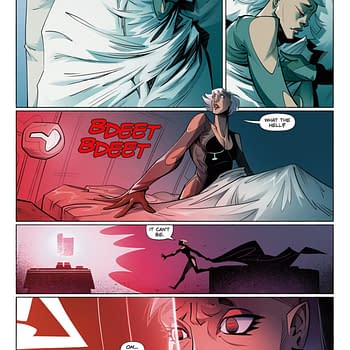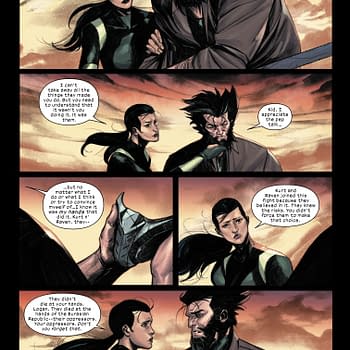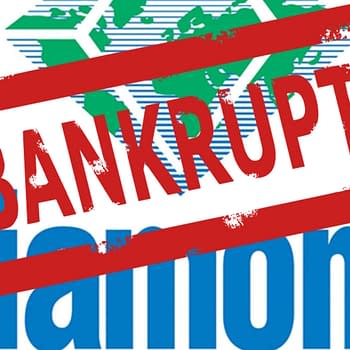Posted in: Comics, Recent Updates | Tagged: comic art, comic cons., cosplay, denise dorman, entertainment, professionals, sales
Myriad Aspects To The Challenge – A Response To Whether Cosplay Is Killing Comic Con
By Bill Watters
Recently, Denise Dorman wrote a thought-provoking piece on the subject of the lessening profitability of attending comic-con styled events by name artists and industry talent that appeared on Bleeding Cool as "Denise Dorman Asks – Is Cosplay Killing Comic Con?" The Bleeding Cool headline leads to the impression that she's suggesting that the presence of cosplayers are what is diminishing conventions' financial viability (though her personal blog post has a longer title at "The Hidden TRUTH About Comic Book Convention Earnings: For Creators, Have Comic Book Conventions JUMPED THE SHARK?"). In reality her point is summed up in her line:
I just float the idea that maybe we've reached a tipping point. Have the expenses of dressing up, rising ticket prices, price gouged hotels, and parking costs to attend these costly conventions made it financially unfeasible for people to actually spend money on exhibitors anymore?
Any by extension, with people spending no small amount on costumes for the events does that further diminish their disposable income available to spend on vendors and artists.
Let's speak to the point of cosplayers to begin with and get that out of the way. It may well be true that those costumes are a major expense for those who choose to pursue it as a hobby and/or profession, however it should also be noted that at most conventions costumed attendees represent well under 10% of the total attendance, and those who have just sunk serious financial commitment into a costume and are a serious cosplayer is under 3%. Given the overall attendance numbers and boom in attendance at most conventions, if you remove from the equation everyone in a costume, you're still at more attendees than there were 5 years ago.
However the intent of her question is very valid, but the dilution of funds is as much related to the costs of simply getting in the door as she mentions, but also the fact that there's no major market that doesn't have fewer than 3 annual major convention styled events. The more an individual is a fan of these events, the more likely they are to attend all of them, and suddenly they have to pay for the heavy costs of attending those events. A decade ago most people only went to a few events year (or only one), and they were profoundly less expensive. Now it's not out of the realm of possibility to attend two events a month for the bulk of the year without too far of a drive, especially in major markets.
If an attendee knows that an artist will probably be at an event they'll be at next month, it's also far easier to rationalize putting off that commission piece until next time, so the impetus of "get it now or miss out" is greatly reduced.
The economy hasn't fully recovered, and even areas where it is, people are still not spending at the levels that they were before the depression recession began.
Also, the serious hobby (and for some a profession) of art collecting has not grown significantly (and for the earlier mentioned reasons the number of collectors has reduced, and their demographic tends to skew older). People love to hunt down their favorite artists and say hi and share a handshake. But now since many artists will post work-in-progress and finals of art they're working on at events, cost conscious fans will as readily save the image off and have it that way.
There are more artists that a given individual may know these days thanks (or no thanks, depending on your point of view) to the Internet. Previously, only the big names were really known beyond your local independent favorites. Now however people will become fans of artists and creators without ever having read any of their comics (initially) simply by seeing shared posts on Facebook. The overall dilution of the market of people who seek out art at shows is now spread among the myriad lanes of artists and dropping the revenues further.
As time progresses, the advent of digital comics (comixology, etc), and it's adoption will also continue to train a good portion of the population that art is a digital consumption medium rather than a physical one.
Over the past decade the focus for events have changed markedly, any glance at marketing materials in most cases shows what the audience is coming to see: celebrity talent, costumes, the vendor hall in general, special events, and far down the list in most (but not all) cases is artists and creators. At this point even when the rare event comes along that is truly artist and comic focused, the current "training" of the bulk of attendees is to be seeking not that, but what they see on television every July when San Diego rolls along.
It's unfortunate to see artists struggling at events, and I wish there were a clear way to change the direction things are headed, but there are myriad aspects to the challenge, the least of which is a limited number of attendees who choose to lessen their available income by creating costumes.
Bill Watters is an event producer, photographer, reporter, and software engineer living in San Francisco. Currently loving writing about and photographing the national geek and fandom scene as well as the latest happenings on both big and small screen. @BillRW3


















